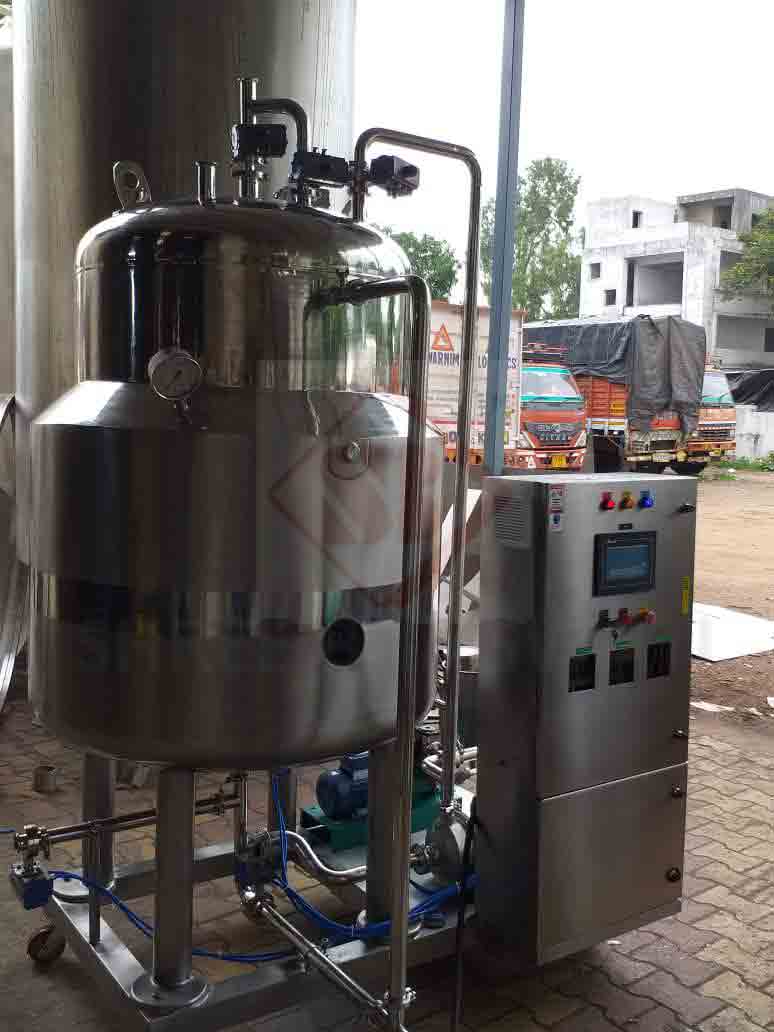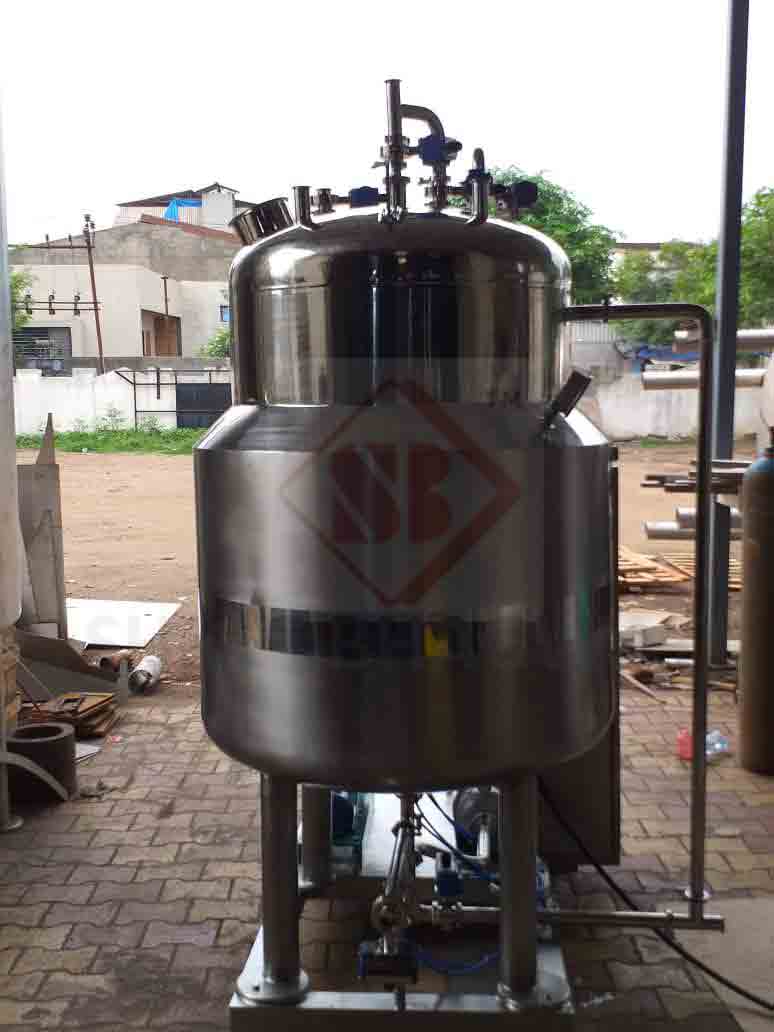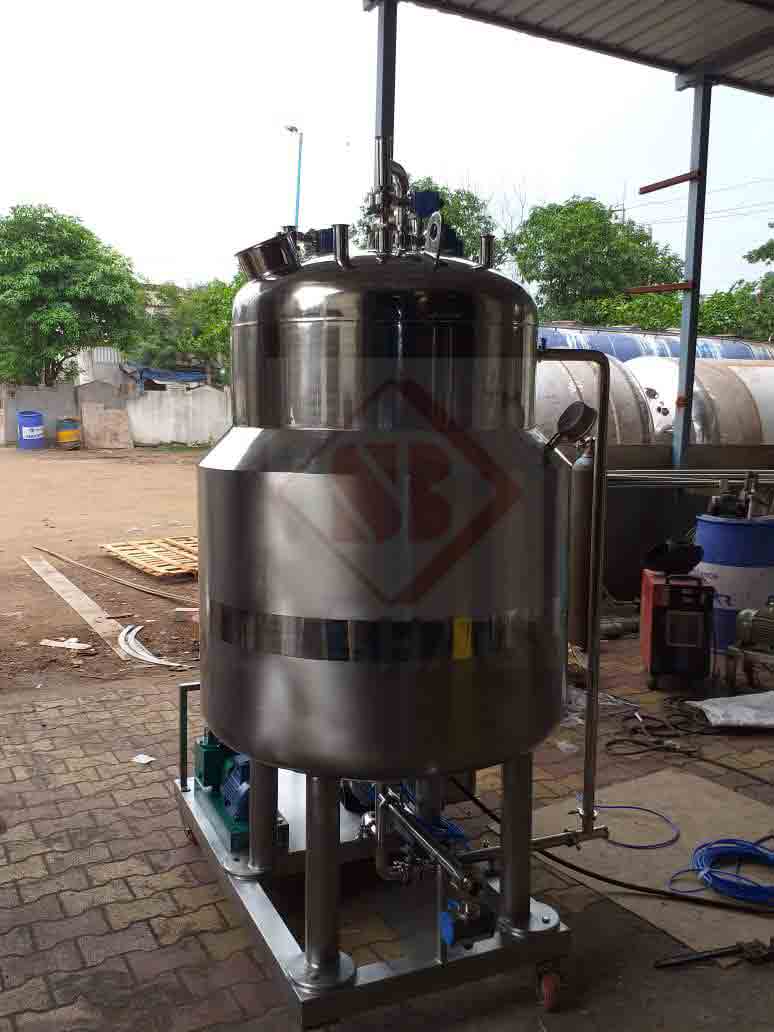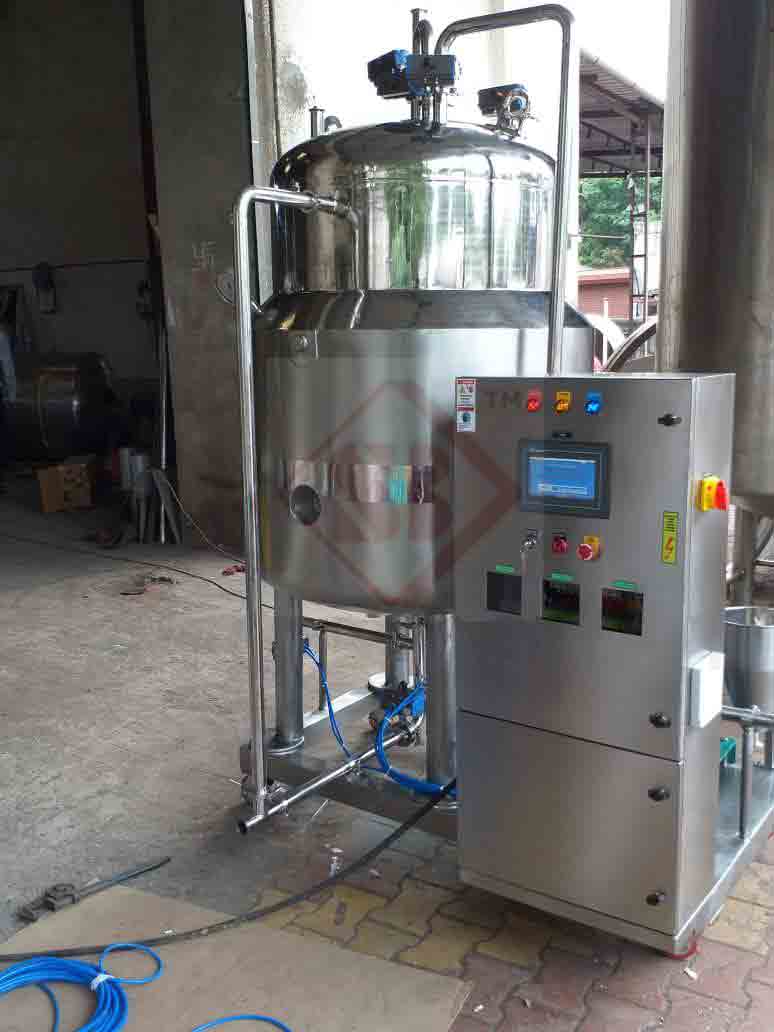Clean-In-Place CIP System Design, CIP Process Skids
Introduction– The modern clean in place( CIP) system skid is a method employed to clean vessels and equipment commonly used in process plants. The basic process involves passing a cleaning fluid across a surface to remove any product soils. The biggest advantage this system offers is that it requires no equipment removal or any disassembly. It offers the most superior and automated cleansing, rinsing, and sanitizing. The CIP cycles are run after a processing run that has produced normal soiling or when there is a changing processing line from one product to another.
They are prominently used in industries like biotech, pharmaceutical, food, dairy, and beverage. The custom requirement is designed as per specifications like the Mobile and Fixed CIP and SIP, Clean in Place Cleaning in CIP processes. The skid units can be of a modular style, semi-automatic or automatic. The Clean in place system is an assembly of mechanical components and devices utilized to combine water, heat, and chemicals to create cleaning solutions.


Clean-In-Place (CIP) systems are used in various industries to clean and sanitize equipment, piping, and other process components without disassembly. CIP systems are designed to eliminate the need for manual cleaning, reduce the risk of contamination, and minimize downtime.
Here are some common applications of CIP systems:
1. Food and beverage industry: CIP systems are widely used in the food and beverage industry to clean and sanitize tanks, piping, and other processing equipment. They are used to clean equipment used in the production of dairy products, beer, wine, juice, and other beverages.
2. Pharmaceutical industry: CIP systems are essential in the pharmaceutical industry to ensure product purity and prevent contamination. They are used to clean equipment used in the production of pharmaceuticals, including mixing tanks, fermenters, and other process equipment.
3. Biotechnology industry: CIP systems are used in the biotechnology industry to clean and sanitize process equipment used in the production of vaccines, therapeutic proteins, and other biologics.
4. Chemical industry: CIP systems are used in the chemical industry to clean equipment used in the production of chemicals, including reactors, mixing vessels, and piping.
5. Cosmetics industry: CIP systems are used in the cosmetics industry to clean equipment used in the production of cosmetics and personal care products, including mixing tanks, filling machines, and packaging equipment.
In general, any industry that requires high levels of cleanliness and sanitation can benefit from the use of CIP systems. CIP systems can help improve process efficiency, reduce costs associated with manual cleaning, and improve product quality and consistency.
Advantages of a CIP system
- It minimizes any human error chances which could lead to an unsafe product due to its high degree of precision and automation. Besides it even reduces the chemical exposure to employees as it contains cleaning solutions within the system.
- It can utilize the production time well as CIP designs entail a faster cleaning process with utility in costs as repeated cycles can reduce the water and energy usage.
- A reliable and consistent cleaning ensures quality production and fewer product recalls.
Requisites of a CIP system
The size and design of the CIP system are influenced by the piping and the equipment which needs to be cleaned. The equipment should be CIP-able. A CIP system can work well when used with a CIP-able process system of piping, valves, and tanks. Secondly, the temperature and chemical concentration of the cleaning fluid and the flow velocity must be high enough to create a turbulent flow. This mechanical action is primarily responsible for dislodging residual product from the interior surface of the process lines and fittings.
Features of the single and multiple tanks clean in CIP Systems
- The CIP Unit has a jacketed and non-jacketed tank and a supply pump or returns pump with pipelines.
- Every component in the line should receive a turbulent flow rate.
- They feature an interconnected piping valve and instrumentation.
- The Mobile SIP Unit has a pure steam header with a safety valve unit. The temperature sensor is also present with a condensate header that has a sterile steam strap unit.
- The Unit has a stainless steel platform and an automated PLC control panel.


Take Away– The basic objective for all process environments includes maximizing the production line and upholding the quality while minimizing other activities and costs. As the cleaning job gets more complex and requires frequent cleaning, the more benefits a CIP design unit can provide. The state-of-the-art and diligently fabricated equipment makes it easier and faster to meet the exact hygiene processing needs. Most industries that invest in a superior CIP design ensure they are at a competitive advantage as they majorly minimize downtime and increase product quality and sanitization.
















